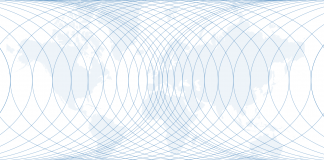The city of Lysychansk has fallen to Russia, giving it full control of Ukraine’s breakaway Luhansk region and putting it in position to gain control over more of Donetsk, the other region that the Kremlin recognized as independent two days before launching its invasion. Russia has the choice of accepting this victory as the culmination of the war or seeking total victory by seizing all of Ukraine. Before considering that option, we need to understand the conceptual framework that defined Russia’s initial plan.
All military forces have a doctrine. Doctrine defines how wars are to be fought. In the United States during the late Cold War, the doctrine was called AirLand Battle, which envisioned a combined arms system for offense and defense operating as a single force under unified command. The Chinese had a doctrine called active defense, which envisioned the enemy constantly on the attack while Chinese forces both contained them in most sectors and carried out attacks as opportunities arose. There are many concepts in any military, and most are of little account. The basic combat model defines the type of weapons to be procured, the proper blend of forces, the training they receive and so on. Doctrines exist for an entire theater and for much smaller units. All must be blended in a single battle force in the event of war.
The Russian doctrine defined after the fall of the Soviet Union is called Deep Battle. It anticipates Russian combat at any level of warfare. The goal is to go as deeply and quickly into the enemy as possible. To do this, there must be intense coordination at all levels of the battle and also between levels. So in Ukraine, Deep Battle was to coordinate the general operations in each theater. Theaters were needed to manage the battle at components as small as battalions. The depth of the doctrine is determined not only by how far the enemy can be penetrated but also by how deeply command and control can be carried out.
Deep Battle holds great promise when information flows rapidly to the next highest level of command. The Russian army is a sledgehammer. When that coordination, consultation and command breaks down – and the key is communication, which is notoriously late or wrong in a battle – the hammer hits the army at its knees. Deep Battle turns into a centralized command system, where senior command cannot see realities at the lower level.
The concept for the initial attack on Ukraine followed the Deep Battle concept. It organized the force into three thrusts built around armor and striking from the north toward Kyiv, from the south toward Odesa and a short distance into the Donbas in the east. The initial orders seemed to be in place regardless of events. The northern force got bogged down on a road and remained there for days, with no correction to its orders. That force was likely intended to support the force coming from the east. Tanks burn fuel fast, even when idling, and logistics didn’t have new orders or couldn’t execute them. Out of the single Deep Battle, there emerged three separate theaters of operations with no integrated battle plan. Clearly, the flow of information broke as infantry entered heavily defended cities and failed to understand the force it was facing. Senior command was unaware of battle intelligence on the enemy, logistical reality or battle reports and, instead of devolving more command, kept the reins tight. It was Deep Battle at its worst.
Get the Geopolitical Futures FREE newsletter
It improved quickly. First, the three zones were treated differently. The northern battle group coming out of Belarus was told to withdraw and possibly send forces to the main battle in the east. The same for the southern thrust. All resources went to the third group, the one that took Luhansk. Deep Battle applied to the single decisive group that defeated the Ukrainians in Luhansk. Rather than fighting the war as a single battle, it took the initial concept and broke it into three theaters taking one area, likely redeploying all but an occupation force and the rest to the southern thrust, which if it succeeds makes the northern thrust irrelevant.
Deep Battle did not fail as a concept but in the execution. The battle now to be fought is simpler. The move toward Odesa will have the orderliness of a successful battle. Senior command is more likely to understand the condition of the battle and give orders as needed, while keeping a careful eye on a single theater, rather than three.
It is far from clear that Russia can win. The concentration on the Donbas has given Ukrainian forces a great deal of badly needed rest, as well as new weapons and training on using those weapons. Soldiers who have experienced the battlefield are far more trainable than the novices who first faced Russia. Russia is now moving toward its next theater of operations, with its troops bloodied and officers who have tasted defeat and victory. They are facing a large, motivated and bloodied Ukrainian army with powerful new weapons. Deep Battle failed the first test, but it gets a second bite against an enemy that fights in small groups with strategic direction but whose tactics reside at far lower levels, a doctrine of diffused authority. Except for the blood that will be shed, it will be interesting to see what happens.




 Special Collection – The Middle East
Special Collection – The Middle East